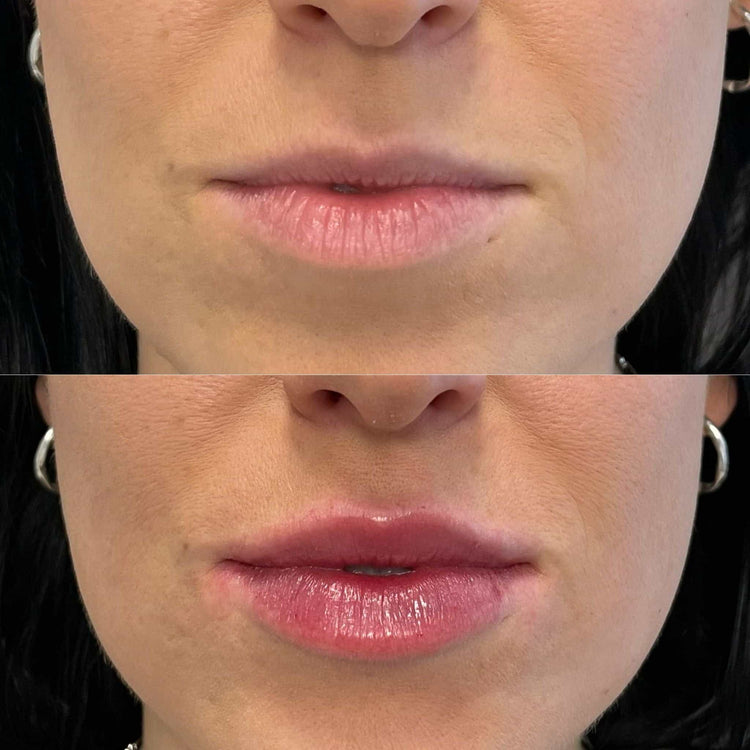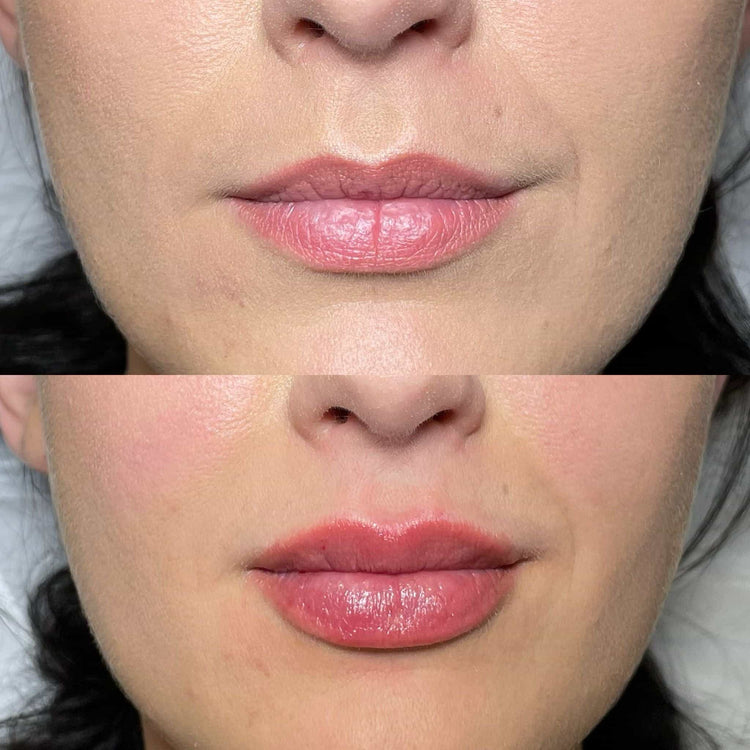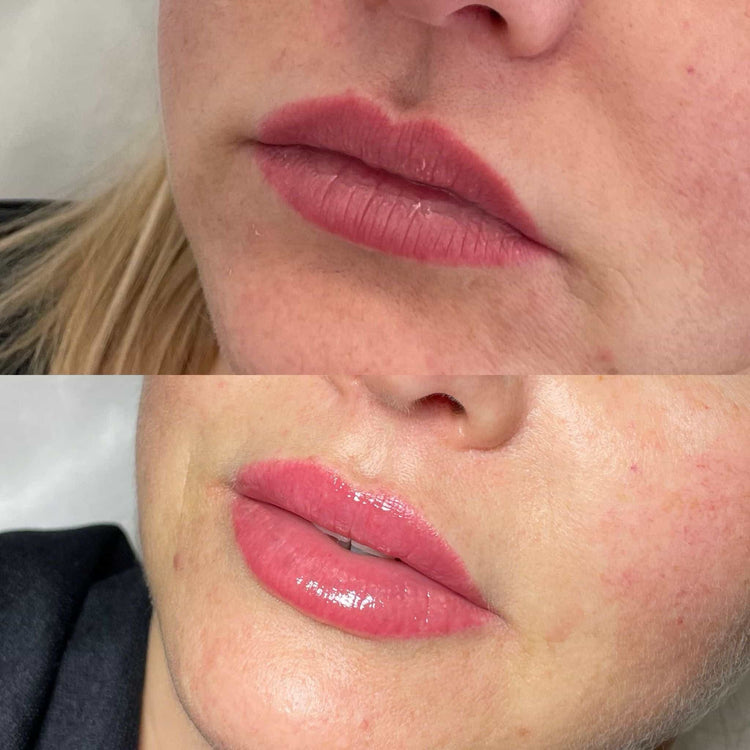Skin Type and Filler Compatibility
Choosing lip fillers can feel like navigating a maze of options, and skin type plays a crucial role in determining which filler is best suited for you. Different skin types react to substances differently, influencing how the filler settles, its longevity, and even the potential for side effects. Understanding your skin type and its compatibility with various filler materials is essential for achieving natural-looking results and minimizing risks.
Oily Skin
Oily skin presents unique challenges when considering lip fillers. The excess sebum production in oily skin can cause fillers to break down faster, reducing their longevity and requiring more frequent top-ups. Certain fillers, like hyaluronic acid-based gels, are known to be better suited for oily skin as they tend to integrate more smoothly and minimize the risk of clumping or migration.
It’s crucial for individuals with oily skin to consult with a qualified injector who can assess their skin type and recommend the most compatible filler. Proper pre-treatment skincare, including cleansing and exfoliation, can help improve the longevity of lip fillers in oily skin by removing excess oil and ensuring better adhesion.
Dry Skin
Dry skin presents a different set of considerations when it comes to lip fillers. Because dry skin lacks moisture, fillers may sit on the surface rather than blending seamlessly with the natural contours. This can create an unnatural appearance and make the lips look stiff or lumpy.

Hyaluronic acid-based fillers are generally well-suited for dry skin as they attract and retain moisture, plumping up the lips and creating a more hydrated look. Additionally, these fillers tend to integrate better with dry tissue, resulting in a smoother and more natural finish.
Combination Skin
Combination skin presents a unique challenge when it comes to choosing lip fillers. This skin type often has both oily and dry areas, meaning some parts of the lips may react differently to the filler. The best approach is to consult with an experienced injector who can assess your individual skin characteristics.
Hyaluronic acid-based fillers are often recommended for combination skin as they tend to be versatile and adapt well to different areas. They can add volume and hydration to drier patches while also integrating smoothly into oilier areas.
Pre-treatment skincare, including cleansing and exfoliating, is crucial for optimizing the results of lip fillers on combination skin. This helps to create a more even surface for the filler to adhere to and minimizes the risk of clumping or uneven distribution.
Sensitive Skin
Sensitive skin requires extra care when considering lip fillers. Individuals with sensitive skin may experience heightened reactions to certain ingredients or procedures. It’s crucial to choose a filler formulated specifically for sensitive skin, opting for hypoallergenic and biocompatible materials. Hyaluronic acid-based fillers are generally well-tolerated by sensitive skin as they are naturally occurring substances in the body.
Before undergoing any lip filler treatment, individuals with sensitive skin should consult with a qualified injector experienced in working with sensitive skin types. A patch test can be performed to assess your individual reaction to the chosen filler material. This helps minimize the risk of allergic reactions or other adverse effects.
Acne-Prone Skin
Choosing lip fillers can feel overwhelming, but understanding your skin type is key to finding the right one. Oily skin tends to break down fillers faster, so hyaluronic acid-based gels are a better choice as they integrate more smoothly. Pre-treatment skincare like cleansing and exfoliation helps improve longevity.
Dry skin can cause fillers to sit on the surface, creating an unnatural look. Hyaluronic acid-based fillers work well for dry skin because they attract moisture, plumping lips and creating a smoother finish.
Combination skin presents a unique challenge, with both oily and dry areas. An experienced injector can assess your individual needs and recommend the best filler. Hyaluronic acid-based fillers are often a good option as they adapt well to different skin types. Pre-treatment skincare is essential for even filler distribution.
Sensitive skin requires extra caution. Choose hypoallergenic and biocompatible fillers, like hyaluronic acid, which is naturally occurring in the body. Consult an experienced injector who works with sensitive skin. A patch test can help identify potential reactions before treatment.
Potential Complications for Different Skin Types
Determining the suitability of lip fillers for different skin types is crucial for achieving natural-looking results and minimizing potential complications.
Infections
Oily skin may experience faster filler breakdown due to excess sebum, potentially requiring more frequent touch-ups. Hyaluronic acid-based fillers often integrate better with oily skin, reducing the risk of clumping or migration.
Dry skin can lead to fillers sitting on the surface, resulting in an unnatural appearance. Hyaluronic acid-based fillers attract and retain moisture, plumping the lips and providing a smoother finish.
Combination skin requires careful consideration as different areas may react differently to fillers. Hyaluronic acid-based fillers can be versatile for combination skin, adapting to both oily and dry patches. Proper pre-treatment skincare is essential for even filler distribution.
Sensitive skin may experience heightened reactions to certain filler ingredients. Hypoallergenic and biocompatible fillers, like hyaluronic acid, are generally well-tolerated. Consult an experienced injector who specializes in working with sensitive skin, and consider a patch test before treatment.
Allergic Reactions
Choosing lip fillers can feel overwhelming, but understanding your skin type is key to finding the right one. Oily skin tends to break down fillers faster, so hyaluronic acid-based gels are a better choice as they integrate more smoothly. Pre-treatment skincare like cleansing and exfoliation helps improve longevity.
Dry skin can cause fillers to sit on the surface, creating an unnatural look. Hyaluronic acid-based fillers work well for dry skin because they attract moisture, plumping lips and creating a smoother finish.
Combination skin presents a unique challenge, with both oily and dry areas. An experienced injector can assess your individual needs and recommend the best filler. Hyaluronic acid-based fillers are often a good option as they adapt well to different skin types. Pre-treatment skincare is essential for even filler distribution.
Sensitive skin requires extra caution. Choose hypoallergenic and biocompatible fillers, like hyaluronic acid, which is naturally occurring in the body. Consult an experienced injector who works with sensitive skin. A patch test can help identify potential reactions before treatment.
Allergic Reactions
- Hives or rash:
- Swelling around the injection site:
- Itching:
- Difficulty breathing:
- Dizziness or lightheadedness:
Lumps and Nodules
Lumps and nodules can occur as a complication of lip filler injections. These lumps often appear as hard, raised areas under the skin, sometimes accompanied by tenderness or pain. They can form due to uneven filler distribution, overfilling, or the body’s natural reaction to the injected material.
Oily Skin
- Lumps and nodules may be more likely to develop in oily skin due to the potential for fillers to break down and migrate, leading to uneven distribution.
Dry Skin
- While less common, lumps and nodules can still occur in dry skin if the filler doesn’t integrate smoothly with the tissue, possibly due to a lack of moisture.
Combination Skin
- Combination skin presents a challenge as different areas may react differently to fillers. It requires careful technique by an experienced injector to minimize the risk of lumps and nodules.
Sensitive Skin
- Sensitive skin may be more prone to allergic reactions or inflammatory responses, potentially leading to the development of lumps or nodules.
Asymmetry
Oily skin presents unique challenges when considering lip fillers. The excess sebum production in oily skin can cause fillers to break down faster, reducing their longevity and requiring more frequent top-ups. Certain fillers, like hyaluronic acid-based gels, are known to be better suited for oily skin as they tend to integrate more smoothly and minimize the risk of clumping or migration.
Dry skin presents a different set of considerations when it comes to lip fillers. Because dry skin lacks moisture, fillers may sit on the surface rather than blending seamlessly with the natural contours. This can create an unnatural appearance and make the lips look stiff or lumpy.
Combination skin presents a unique challenge when it comes to choosing lip fillers. This skin type often has both oily and dry areas, meaning some parts of the lips may react differently to the filler. The best approach is to consult with an experienced injector who can assess your individual skin characteristics.
Sensitive skin requires extra care when considering lip fillers. Individuals with sensitive skin may experience heightened reactions to certain ingredients or procedures. It’s crucial to choose a filler formulated specifically for sensitive skin, opting for hypoallergenic and biocompatible materials. Hyaluronic acid-based fillers are generally well-tolerated by sensitive skin as they are naturally occurring substances in the body.
Tips for Choosing the Right Filler for Your Skin Type
Choosing lip fillers can feel like navigating a maze of options, and skin type plays a crucial role in determining which filler is best suited for you. Different skin types react to substances differently, influencing how the filler settles, its longevity, and even the potential for side effects. Understanding your skin type and its compatibility with various filler materials is essential for achieving natural-looking results and minimizing risks.
Consultation with a Qualified Provider
Choosing lip fillers can feel overwhelming, but understanding your skin type is key to finding the right one. Oily skin tends to break down fillers faster, so hyaluronic acid-based gels are a better choice as they integrate more smoothly. Pre-treatment skincare like cleansing and exfoliation helps improve longevity.
Dry skin can cause fillers to sit on the surface, creating an unnatural look. Hyaluronic acid-based fillers work well for dry skin because they attract moisture, plumping lips and creating a smoother finish.
Combination skin presents a unique challenge, with both oily and dry areas. An experienced injector can assess your individual needs and recommend the best filler. Hyaluronic acid-based fillers are often a good option as they adapt well to different skin types. Pre-treatment skincare is essential for even filler distribution.
Sensitive skin requires extra caution. Choose hypoallergenic and biocompatible fillers, like hyaluronic acid, which is naturally occurring in the body. Consult an experienced injector who works with sensitive skin. A patch test can help identify potential reactions before treatment.
To ensure the best possible outcome, it’s crucial to consult a qualified provider for personalized advice. They will assess your skin type, discuss your desired results, and recommend the most suitable filler materials and techniques.
Understanding Filler Ingredients

Choosing lip fillers can feel like navigating a maze of options, and skin type plays a crucial role in determining which filler is best suited for you. Different skin types react to substances differently, influencing how the filler settles, its longevity, and even the potential for side effects. Understanding your skin type and its compatibility with various filler materials is essential for achieving natural-looking results and minimizing risks.
Oily Skin
- Hyaluronic acid-based fillers are often recommended for oily skin as they tend to integrate more smoothly, reducing the risk of clumping or migration. These fillers attract and retain moisture, plumping up the lips and creating a smoother finish.
Dry Skin
- Hyaluronic acid-based fillers are also suitable for dry skin as they attract and retain moisture, plumping up the lips and blending seamlessly with the natural contours. This helps create a more hydrated look.
Combination Skin
- Hyaluronic acid-based fillers can be versatile for combination skin, adapting to both oily and dry patches. It’s crucial to consult with an experienced injector who can assess your individual needs.
Sensitive Skin

- Choose a filler formulated specifically for sensitive skin, opting for hypoallergenic and biocompatible materials like hyaluronic acid, which is naturally occurring in the body.
- Consult an experienced injector who specializes in working with sensitive skin types, and consider a patch test before treatment to assess your individual reaction.
Understanding filler ingredients is crucial for making informed decisions about lip fillers. Commonly used ingredients include:
- Hyaluronic acid: A naturally occurring substance in the body that attracts and retains moisture, providing volume and hydration.
- Calcium hydroxyapatite:**
- **Poly-L-lactic acid (PLLA):** This biocompatible material stimulates collagen production, leading to gradual volumization.
Choosing lip fillers can feel overwhelming, but understanding your skin type is key to finding the right one. Oily skin tends to break down fillers faster, so hyaluronic acid-based gels are a better choice as they integrate more smoothly. Pre-treatment skincare like cleansing and exfoliation helps improve longevity.
Dry skin can cause fillers to sit on the surface, creating an unnatural look. Hyaluronic acid-based fillers work well for dry skin because they attract moisture, plumping lips and creating a smoother finish.
Combination skin presents a unique challenge, with both oily and dry areas. An experienced injector can assess your individual needs and recommend the best filler. Hyaluronic acid-based fillers are often a good option as they adapt well to different skin types. Pre-treatment skincare is essential for even filler distribution.
Sensitive skin requires extra caution. Choose hypoallergenic and biocompatible fillers, like hyaluronic acid, which is naturally occurring in the body. Consult an experienced injector who works with sensitive skin. A patch test can help identify potential reactions before treatment.
To ensure the best possible outcome, it’s crucial to consult a qualified provider for personalized advice. They will assess your skin type, discuss your desired results, and recommend the most suitable filler materials and techniques.
Skincare Routine Compatibility
Choosing lip fillers can feel like navigating a maze of options, and skin type plays a crucial role in determining which filler is best suited for you. Different skin types react to substances differently, influencing how the filler settles, its longevity, and even the potential for side effects. Understanding your skin type and its compatibility with various filler materials is essential for achieving natural-looking results and minimizing risks.
Oily Skin
Hyaluronic acid-based fillers are often recommended for oily skin as they tend to integrate more smoothly, reducing the risk of clumping or migration. These fillers attract and retain moisture, plumping up the lips and creating a smoother finish.
Dry Skin
Hyaluronic acid-based fillers are also suitable for dry skin as they attract and retain moisture, plumping up the lips and blending seamlessly with the natural contours. This helps create a more hydrated look.
Combination Skin
Hyaluronic acid-based fillers can be versatile for combination skin, adapting to both oily and dry patches. It’s crucial to consult with an experienced injector who can assess your individual needs.
Sensitive Skin
Choose a filler formulated specifically for sensitive skin, opting for hypoallergenic and biocompatible materials like hyaluronic acid, which is naturally occurring in the body. Consult an experienced injector who specializes in working with sensitive skin types, and consider a patch test before treatment to assess your individual reaction.
To ensure the best possible outcome, it’s crucial to consult a qualified provider for personalized advice. They will assess your skin type, discuss your desired results, and recommend the most suitable filler materials and techniques.
Book a lip filler treatment with Dr. Laura Geige at It’s Me & You Clinic for flawless results
- How Cannabis Drinks Are Changing The Way We Unwind - July 7, 2025
- Gummy Smile Treatment – Gum Contouring Near West Clandon, Surrey - July 4, 2025
- Gummy Smile Treatment – Gum Contouring Near Ham, Surrey - July 3, 2025
